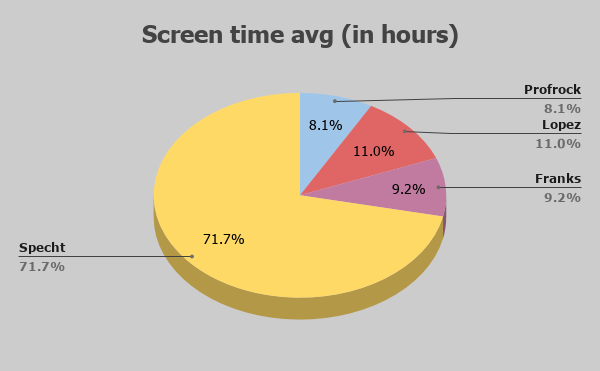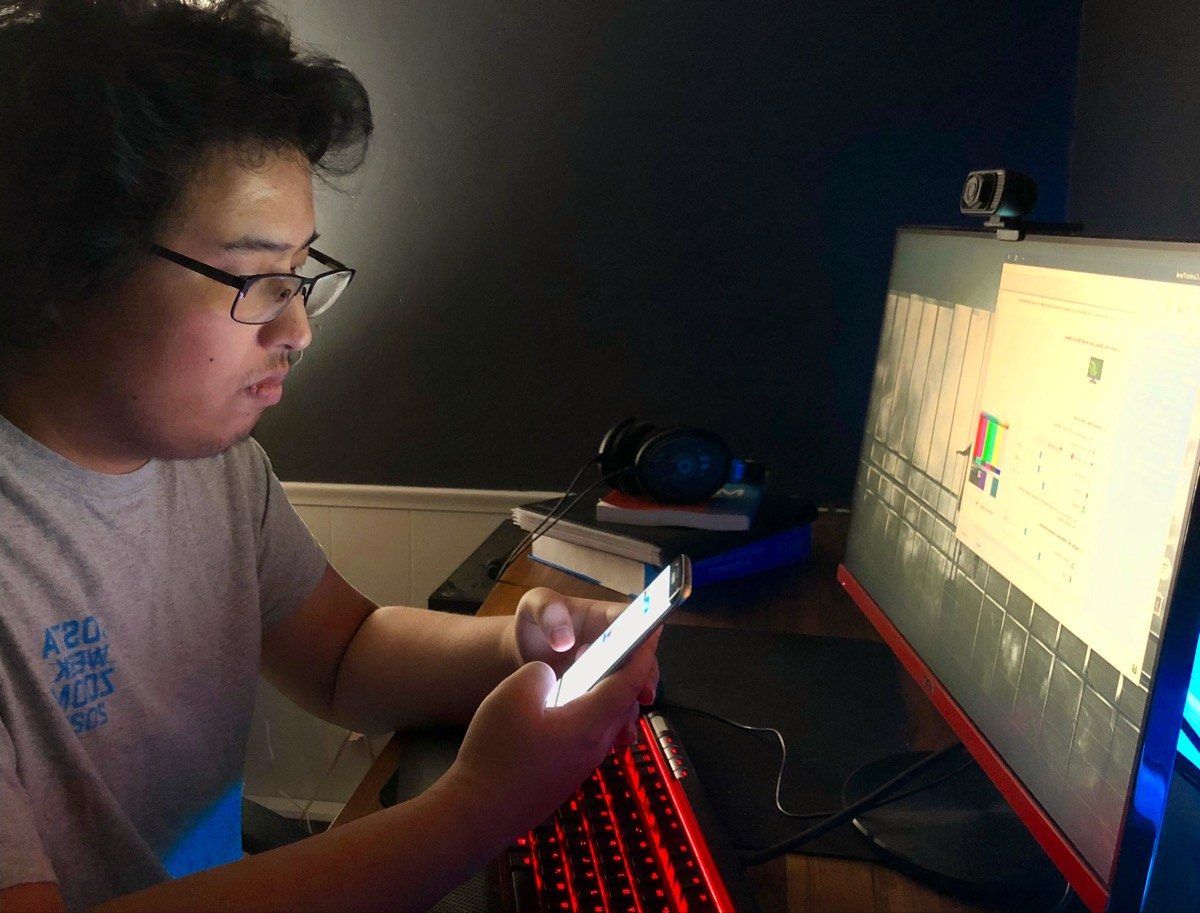It’s no doubt the switch to online learning has increased screen time. Students and educators sit in front of their screens for classes and homework hours a day. On some days, you’ll be lucky to step outside.
With all the screen time, some people are uninformed about the dangers screens emit. Theconversation.com gets into how technology has made the use of screen time increase and basically take up a majority of the day without realizing it. Apple devices have a built-in feature that logs how much time was spent on the platforms.
“I wear glasses that block the blue light emitted from my laptop,” Victoria Profrock, junior biology chemistry student said. “I have experienced constant headaches and strained, dry, bloodshot eyes before buying the glasses.”
Profrock racked a total of seven hours just on her phone from the past two weeks. Using four different screens and switching between platforms like Instagram, Twitter, Snapchat, Blackboard Collaborate and Gmail, her screen time piles up.
She understands the strain and damage screens can cause on her health so she tries not to use her screen unless she has to.
For Jaylene Lopez, junior psychology student, it’s felt more difficult to break away from screens. When your classes are meeting online five days a week and doing homework seven days a week you can’t get a break.
“I feel addicted to my screens after consistently using Zoom, Google Classroom, Snapchat, Instagram, Facebook and Instagram,” Lopez said.
She never knew about blue light and the negative effects. Lopez spent about five hours within the past two weeks on her phone screen and four and a half hours with her laptop screen. Totaling at around nine and a half hours per day.
Trying to balance school and social life, Lopez finds it especially difficult when she can hang with friends instead of her laptop and phone

As an educator, Lisa Franks, French adjunct professor, has a total of seven screens. Even with all of these displays, the only issue Franks has experienced is sleep.
Using platforms like Blackboard, Facebook, Twitter, Zoom, Facebook, Skype and Firefox, she says she doesn’t have a problem nor does she feel addicted to the screens.
Franks added, “I enjoy using Facebook and Twitter to keep in touch with others and Firefox for news sites like NY Times and The Washington Post.”
It’s significantly different for Marrin Specht, freshman international business student, who logged 62 hours on her three screens over the past two weeks. However, she switches to yellow light at night to help the effects of blue light.
Theconversation.com said in 2017, U.S. adults spent an average of three hours and 20 minutes a day using their smartphones and tablets.
Utilizing TikTok, Snapchat, Netflix, Microsoft Teams, Zoom, Blackboard and Among Us, she’s only experienced tired and dry eyes. Nothing too severe.
However, Specht said, ”I’ve absolutely have felt more addicted to my screens. I’ve found some sort of comfort in apps like TikTok.”
Reviewing screen times has been an uncomfortable realization, although very understanding. Specht said, “It gets to a point where you have to give yourself a break from all the screen time, then it’s frustrating dealing with the anxiety to make sure work is done on time.”
Knowing her screen time after these two weeks, she’s made it her goal to step away to read and meditate in order to give her eyes the much-needed break.
With this discussion of weekly eye strain, Profrock said, “More people seem to be heavily dependent on screen time and do not focus on present things.”




